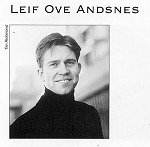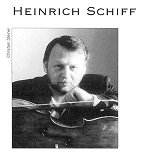What is a sonata? Leif Ove Andsnes is an inspiring duo-partner and his imagination is fired by working with other larger-than-life musicians, of whom Heinrich Schiff is an example (see also review of Andsnes with Christian Tetzlaff ). (Second place in a listing doesn't suit Andsnes as he presents himself.) The piano lid is thrust wide open, without any attempt to 'accompany' the cello, an instrument which can pose particular balance problems (Gerald Moore's 'Am I playing too loud?'). In the main the eye, drawn to the visual eloquence of the bow, compensates easily, and Andsnes commands a full dynamic range, which allowed for easy and equal exchanges in Janacek & Webern. The Brahms Op 99 was rather less successful, rough in places and a little over-pedalled - more clarification of texture in the middle range might have been sought. Schiff gave full value in the sonorous pizzicato melody of the slow movement - was Brahms prompted to this always-exciting effect by the similar one in the slow movement of Beethoven's Op 59/3? (Travel disruption made me miss their Beethoven Op. 5/1.)
Janacek's Pohadka, a major work and a sonata in all but name, has belatedly entered the cello recitalist's pantheon of masterworks, and always makes a strong effect slipped into a programme of canonic classical sonatas. The case of Webern (1883-1945) is more problematic. His tiny pieces are celebrated for their compression, but is this always such a virtue? The late rediscovered Sonata (1914) turns out to be no more than a vigorous two minute piece in his expressionist style, before he became a rigorous serialist (he abandoned its intended completion, as - I think - did Berg in his Op 1). It was followed by the three tiniest of pieces for cello from the same year, the second Sehr bewegt in a similar manner to the 'sonata' movement.
Put them all four together, bill the latter also just as Sehr bewegt (sonata here is meaningless, signifying no more than frustrated intent), make it clear that applause during the group is unwanted, and you'd have a viable four minute or so item. Webern was also represented by his Romantic Melody of 1899,whose more expansive lines showed promise but, after a mere two minutes - just when it seemed about to take flight - it too evaporated. At least this ensured an early finish for us to recommence battle with London's transport chaos!
Peter Grahame Woolf


 Return to:
Return to: